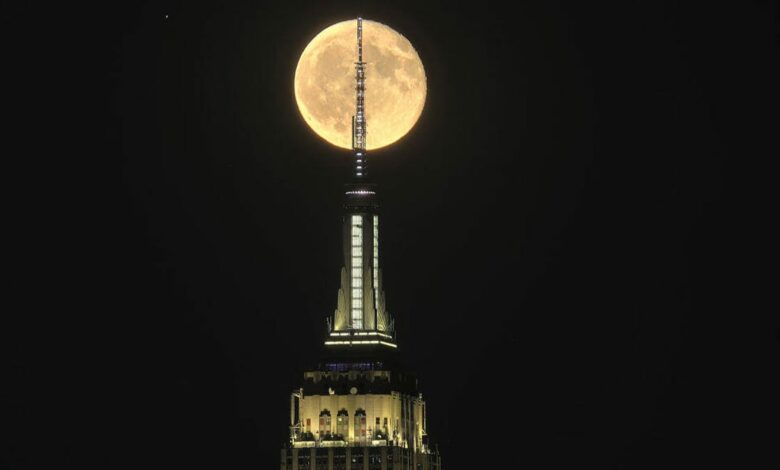Don’t miss your chance to see Saturn and Neptune in September: here’s how

Take the opportunity to get outside and look for planets this September. Saturn and Neptune are at full opposition this month. That term may not be familiar to everyone, but it makes them much easier to see for the amateur astronomer.
When a planet is at opposition, it means that the Earth is directly between the sun and the planet, meaning that the planet will remain visible in the night sky for as long as possible. When planets are not at opposition, part of their daily cycle occurs during daylight hours, limiting the amount of time you can see them at night.
The Seeliger Effect, also known as the opposition effect, also plays a role here. Essentially, something will appear brighter when it is illuminated from behind the viewer. In this case, the Sun is behind the Earth, illuminating Saturn. The Seeliger Effect not only makes Saturn brighter, but it also illuminates its iconic rings, making them easier to see when viewing them through a telescope.
Saturn will be at opposition on September 7-8. Neptune will be next on the evening of September 20-21. On those dates, all of the planets will be in the sky all night, from sunrise to sunset, giving astronomers plenty of time to find and observe them. In the case of Saturn, it will also appear larger and brighter than usual.
Read more: Seize this rare opportunity to see Mercury in the night sky without a telescope
When is the best time to look at Saturn and Neptune?
The evening of September 7 and the morning of September 8 are the best times to see Saturn. Saturn rises in the eastern sky around 8:10 p.m. local time and begins its journey across the sky. It sets the next day around 6:50 a.m., just before sunrise in the western sky. Saturn rises around 7:20 p.m. local time on September 20 and sets around 6:00 a.m. local time on September 21. Although opposition technically occurs on September 7, you have plenty of time to see Saturn most of the night in September.
Neptune is much the same. On the evening of September 20th, Neptune will rise from the eastern sky around 7:40 p.m. local time and set around 7 a.m. the next day. Opposition is that day, but like Saturn, you have a few weeks to observe it, as it will be visible in the sky for most of the night.
Read more: One-time ‘Blaze Star’ explosion will light up September skies
Do I need a telescope to see Saturn and Neptune?
If you want to see the cool stuff, yes, you’ll need a telescope or some very powerful binoculars. Technically, Saturn is visible to the naked eye. It looks like a bright star in the sky. However, you can see Saturn as a star in the sky for large parts of the year, and if you plan to view it this way during opposition, you’ll only see half the good stuff.
Thanks to the aforementioned Seeliger Effect, Saturn’s rings will be brighter and easier to see than during the rest of the year. A telescope will help skygazers catch a glimpse of the famous rings.
In the case of Neptune, you definitely need a telescope or at least a pair of high-powered binoculars to see it. It’s just too far away to see with the naked eye without some sort of assistance. While it’s at opposition, you have all night to find it.
Read more: Mars rover finally leaves crater it lived in for years
How do I find Saturn and Neptune?
The two planets will not be too far apart in the night sky. Saturn will spend most of the month in the constellation Aquarius. It will rise in the eastern sky, pass over it during the evening, and set in the western sky just before sunrise.
Neptune will be making a similar journey, rising from the eastern sky, passing overhead as the night progresses, and setting in the west just before sunrise. It will be hanging in the constellation Pisces, which is right next to Aquarius. So you don’t have to search the sky everywhere to find both. If you find one, the other won’t be too far away.
If you need help finding it, Stellarium And Time and date have web-based tools that let you surf the night sky from your general location, which can give you an idea of where to look. Star Walk 2 is available at iOS And Android if you prefer to find them with your phone.
When are Saturn and Neptune in opposition again?
For Neptune, the answer is simple. Next year, it will be at opposition again, about 48 hours later than this year. Neptune’s orbit takes 165 Earth years, so it only moves a tiny bit in the time it takes us to go around the sun. This is why Neptune is at opposition once every 367 days average. It will continue to happen in the fall for decades to come. Neptune will finally be in opposition on Christmas Eve in the year 2066.
For Saturn, it’s not all that different, except that it moves further along the calendar than Neptune does each year. In 2025, Saturn will be at opposition on September 21st, while in 2026 it will happen on October 4th. That means that Neptune and Saturn will be at opposition within two days of each other next year. After that, they will gradually move further apart, and won’t be in the same month again until 2060.
As you look up at the sky, see if T Coronae Borealis has appeared yet, adding a new, temporary star to the sky. And if you get up early, you should be able to see Mercury and Saturn in the sky at the same time without a telescope.




